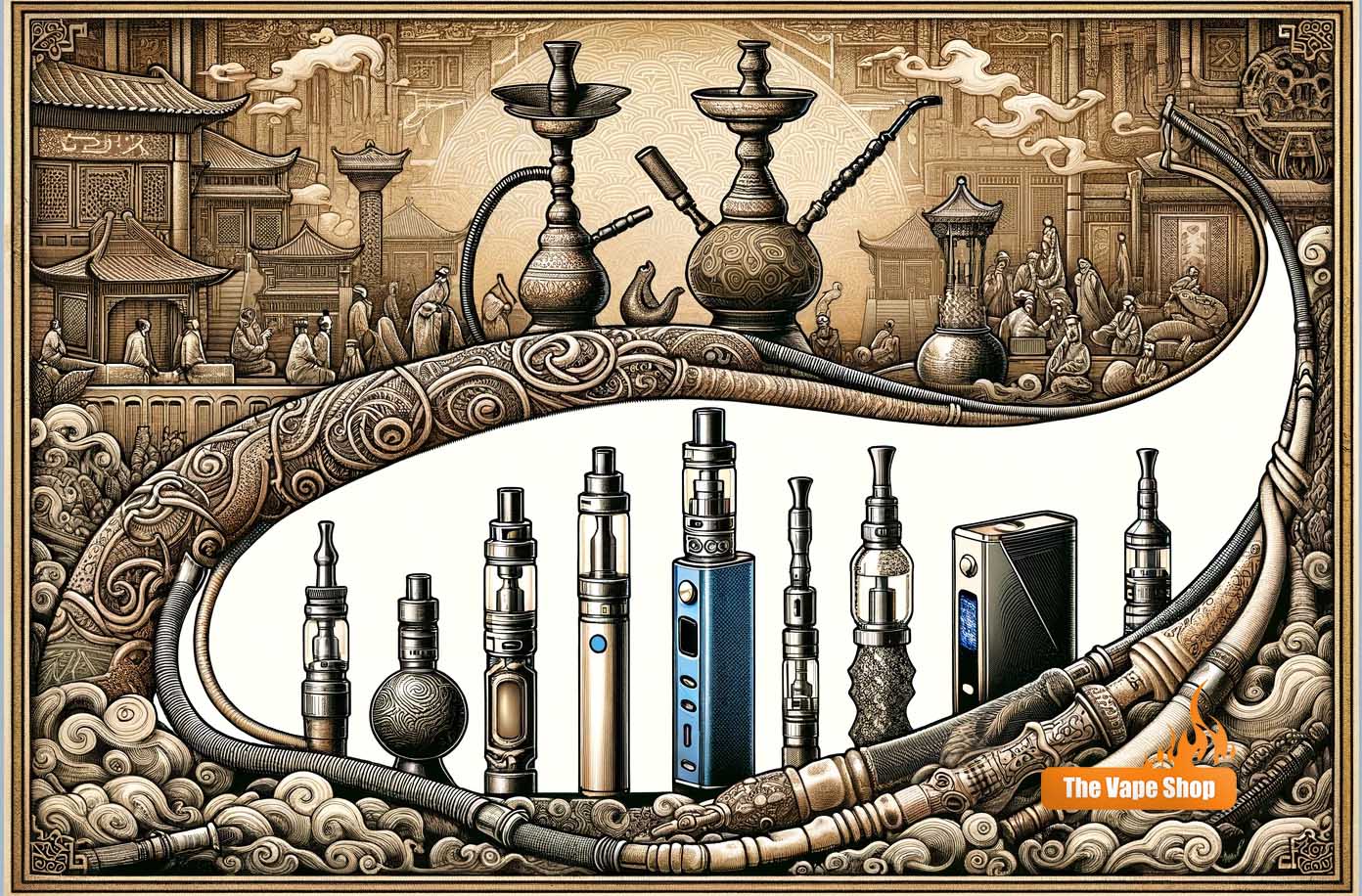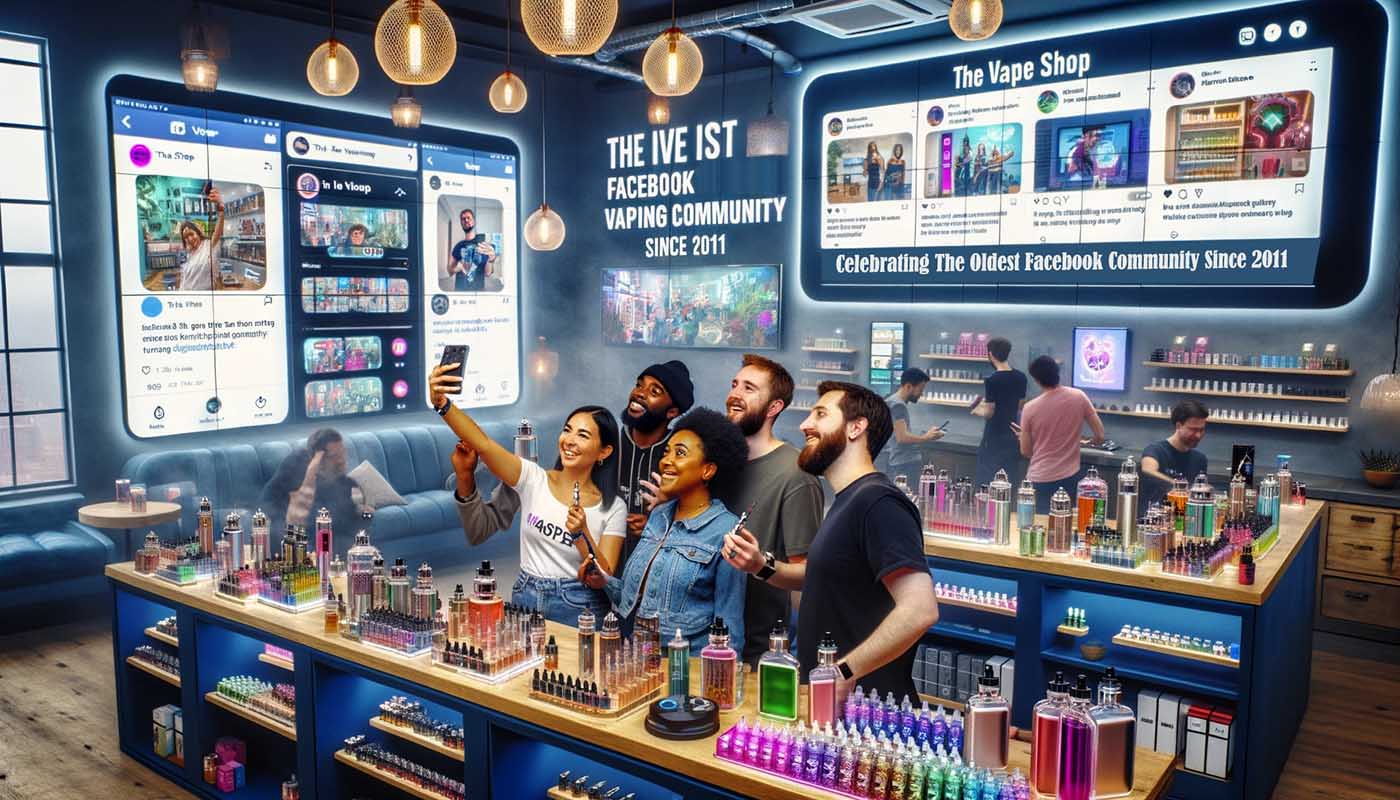Tracing the Evolution of Inhalation / Vaping Traditions
In the vast panorama of human cultural practices, the act of inhaling vapours from various devices stands out as a remarkably enduring habit, stretching back centuries. This tradition, evolving through time and across different civilisations, manifests the human fascination with the sensory experience of inhaling flavoured vapours.
The journey begins in the ancient Middle East and China, where the earliest forms of vapour inhalation were more than just a means of consumption; they were deeply embedded in the social and cultural fabric of the time. These practices were not merely about the act itself but also about the communal experience, the craftsmanship of the devices, and the rituals that surrounded them.
In the Middle East, the use of hookahs became a symbol of hospitality and leisure, a social ritual that brought people together. Similarly, in ancient China, water and opium pipes were not just tools for smoking; they were intricately crafted works of art, reflecting the status and sophistication of their users. These traditions were about more than just smoking; they were about creating an experience.
As we move to Africa, the tradition continues but with unique regional variations. The use of water and dry pipes in different parts of the continent reflects a diverse approach to the same basic desire – to inhale and savour the vapours of various substances.
Fast forward to the 21st century, and we see the emergence of vaping. While it might seem like a modern invention, it is, in fact, the latest adaptation in this long historical thread. Vaping is not a new phenomenon but a contemporary reinterpretation of an age-old habit. It is the culmination of centuries of evolution in the practice of inhalation, from rudimentary pipes to sophisticated electronic devices.
This evolution highlights a critical aspect of human nature: our inclination to adapt and refine our experiences. Vaping represents the modern era’s answer to the age-old desire for inhalation. It takes the essence of this timeless practice and melds it with technology, offering a cleaner, more controlled, and customisable experience. Yet, at its core, it remains a continuation of the centuries-old tradition of finding pleasure and camaraderie in the simple act of ‘puffing on sweet vapour pipes.’
The Middle Eastern Tradition of Hookah and Shisha

Origins and Mechanism
– Early Beginnings: The tradition of using hookah and shisha pipes has its roots in the Middle East. The earliest known use of the hookah dates back to the 16th century in India and Persia.
– How it Works: Hookahs are designed to pass tobacco smoke through water before inhalation, offering a distinct flavour and experience. The tobacco is often flavoured, adding to the sensory appeal.
Cultural Significance
– Social Aspect: Traditionally, hookah smoking has been a social activity, with people gathering around a single hookah. It’s not just a means of smoking but a way to foster community and conversation.
The Ancient Chinese and Opium Pipes

Historical Use
– Water Pipes: In ancient China, communal pipe water pipe smoking and opium smoking were prevalent. The earliest recorded use of opium pipes dates back to the 16th century.
– Cultural Context: Opium pipes, made from bamboo or ceramic, were an integral part of Chinese culture and social life, often associated with the upper classes.
African Water Pipes and Dry Pipes

Archaeological Evidence
– Diverse Traditions: In Africa, the use of water pipes, primarily associated with cannabis, and dry pipes, mainly for tobacco, has a long-standing history.
– Pipe Construction: Only the clay or stone bowls of these pipes survive archaeologically. The shape of the bowls varies, indicating different regional pipe-making traditions.
The Evolution of Vaping

Modern Adoption
– 21st Century Vaping: Vaping, the act of inhaling vapour produced by an electronic device, has its origins in the early 2000s.
– Growth and Diversity: The vaping industry has seen exponential growth, with a vast array of flavours and devices available. It’s become a lifestyle choice for many, with options like zero nicotine flavours.
Tying It All Together
In tying together the rich tapestry of inhalation traditions from around the world, it becomes evident that vaping is not an isolated or distinctly modern phenomenon. Instead, it represents a seamless adaptation and continuation of a practice deeply rooted in human history. This perspective reframes vaping from being perceived as a 21st-century novelty to being recognised as the latest chapter in a long story of human ingenuity and cultural evolution.
Vaping, in essence, is the Western world’s contemporary interpretation of ancient inhalation practices that were prevalent in Eastern and Oriental cultures. It encapsulates a fundamental human desire that has transcended time and geography: the enjoyment of inhaling flavoured vapours. The evolution from traditional hookahs and shisha to the sleek electronic vapes of today is not a drastic departure but a subtle and natural progression. This progression mirrors humanity’s journey with technology and cultural shifts, adapting traditional practices to fit contemporary lifestyles.
As we examine this journey, it becomes clear that each era and culture has contributed uniquely to the development of inhalation practices. The intricate hookahs of the Middle East, the ceremonial opium pipes of China, and the varied pipes of Africa all represent different expressions of this shared human experience. Vaping, as the most recent expression, stands on the shoulders of these ancient traditions. It takes the core concept – the pleasure of inhaling vapour – and applies modern technology to enhance, refine, and personalise the experience.
In conclusion, the shift from traditional smoking methods to vaping is more than just a technological change; it is a reflection of humanity’s ongoing quest to enhance and adapt our experiences. Vaping, therefore, should not be seen as a standalone invention of the modern era but as a natural, adaptive step in a centuries-old tradition. It’s a continuation of a story that began long ago, a story of human creativity, social connection, and the timeless pursuit of sensory enjoyment.














